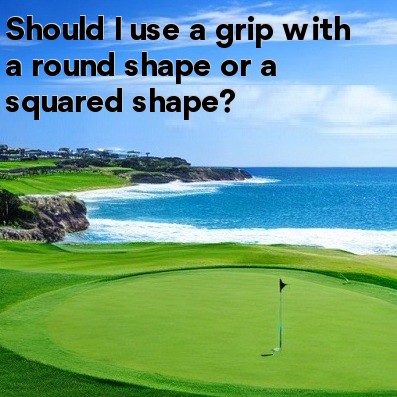
In golf, Should I use a grip with a round shape or a squared shape?
When it comes to golf, one of the most crucial elements of a golfer's swing is the grip. The way a golfer grips the club can greatly influence the accuracy and power of their shots. One common debate among golfers is whether to use a grip with a round shape or a squared shape. Let's dive into each option to help you make an informed decision.
Round Shape Grip
A round shape grip, also known as a neutral grip, is when the golfer's hands align more with the face of the club. This grip allows for a natural rotation of the hands and wrists during the swing. Here are some advantages and disadvantages of using a round shape grip:
- Advantages:
- Enhanced feel and touch: The round grip allows for better sensitivity and control over the clubhead.
- Natural release of the club: The rotation of the hands promotes a smooth and fluid release of the clubhead through impact.
- Reduced chance of slicing: A round grip helps minimize the chances of the clubface being left open at impact, which could result in a slice.
- Disadvantages:
- Limited power potential: The round shape grip may restrict the golfer's ability to generate maximum power due to slightly reduced leverage.
- Potential for hooking: Over-rotation of the hands with a round grip can lead to hooks or pulled shots.
Squared Shape Grip
A squared shape grip, also known as a strong grip, involves rotating the hands more to the right (for right-handed golfers) on the handle of the club. This grip positions the clubface in a closed position at address. Let's explore the potential pros and cons:
- Advantages:
- Increased power potential: The squared shape grip allows the golfer to generate higher clubhead speed and potentially hit the ball farther.
- Reduced chance of slicing: The closed clubface position helps prevent the ball from curving right for right-handed golfers (assuming a proper swing path is maintained).
- Disadvantages:
- Loss of feel and touch: The squared shape grip may reduce sensitivity and feel, which can affect delicate shots around the greens.
- Inconsistent shot patterns: If the golfer fails to maintain a proper swing path, a squared shape grip can lead to hooks or a “block” to the right.
- Requires adjustment: A squared shape grip often requires adjustments to other aspects of the swing, such as the swing plane and clubface control.
Ultimately, the decision between a round shape or squared shape grip boils down to personal preference and what works best for your swing. It can be beneficial to experiment with both grips on the driving range and seek advice from a qualified golf instructor. They can analyze your swing and help you determine which grip promotes better consistency and allows you to achieve your desired shot shape. Remember, the grip is just one piece of the puzzle, and proper technique and practice are essential for success in golf.





